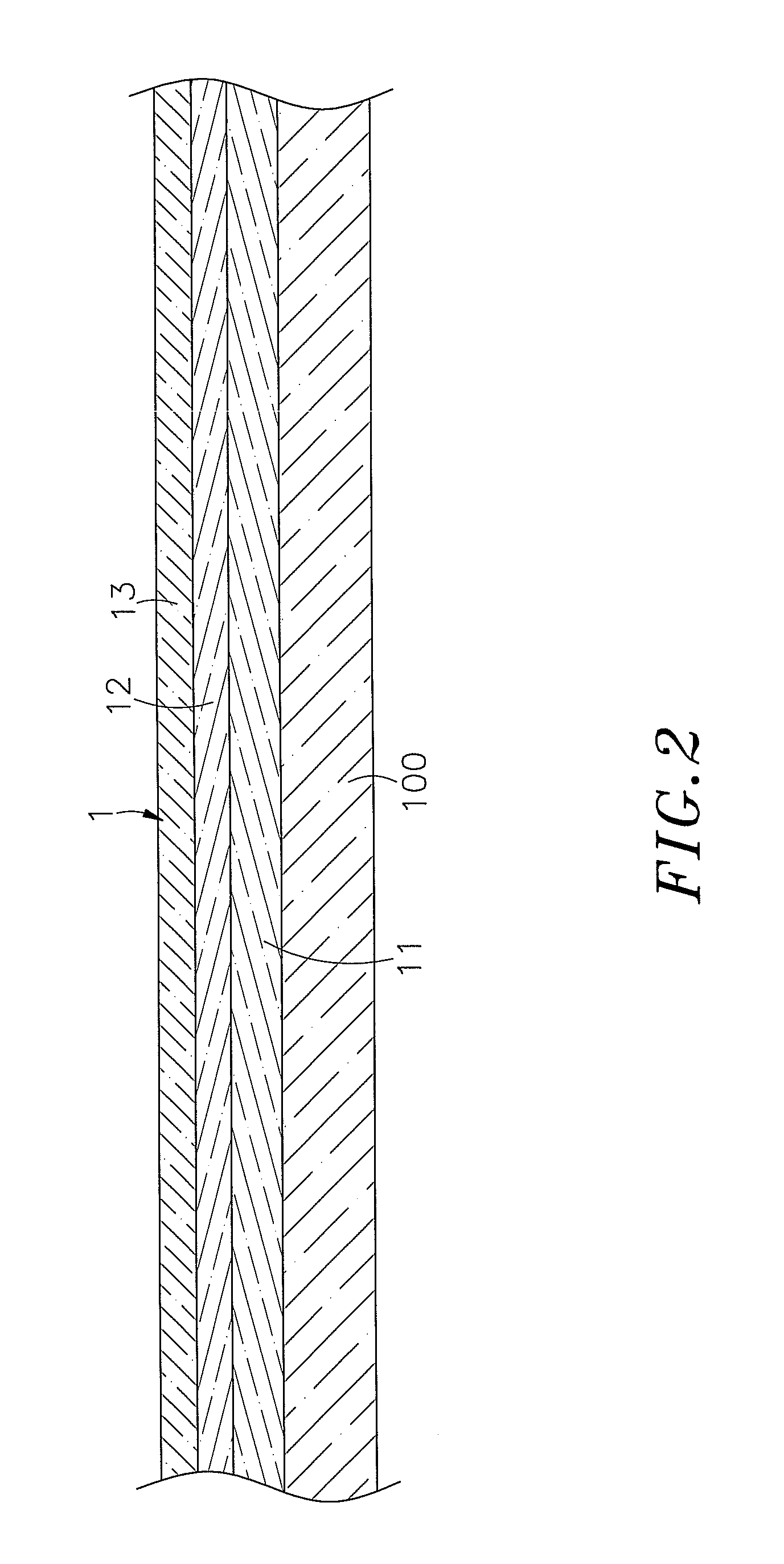Flip-chip GaN LED fabrication method
a fabrication method and chip technology, applied in semiconductor/solid-state device manufacturing, electrical equipment, semiconductor devices, etc., can solve the problems of affecting the reliability and lifespan of sapphire substrate-based led chips, poor heat transfer characteristics of sapphire substrates, and lowering luminous efficiency, so as to avoid interference, reduce forward voltage and power consumption, and avoid light loss
- Summary
- Abstract
- Description
- Claims
- Application Information
AI Technical Summary
Benefits of technology
Problems solved by technology
Method used
Image
Examples
Embodiment Construction
[0037]Referring to FIGS. 1˜4, a flip-chip LED fabrication method in accordance with the present invention includes the steps of:[0038](100) Provide a GaN (Gallium Nitride) epitaxial wafer consisting of a GaN epitaxial layer 2, which comprises a N-type GaN ohmic contact layer 11, a light-emitting layer 12 and a P-type semiconductor layer 13 and is arranged on a substrate 100 (see FIG. 2).[0039](101) Form a first groove 101 in the GaN epitaxial layer 2 at a predetermined location by etching to expose a part of the substrate 100 of the GaN epitaxial wafer (see FIG. 3).[0040](102) Form a second groove 102 in the GaN epitaxial layer 2 at a predetermined location adjacent to the first groove 101 by etching to expose a part of the N-type GaN ohmic contact layer 11 of the GaN epitaxial layer 2 so that the GaN epitaxial layer 2 is divided by the second groove 102 into two epitaxial layer portions 2A; 2B (see FIG. 4).[0041](103) Form a translucent conducting layer 14 on the surface of the epi...
PUM
| Property | Measurement | Unit |
|---|---|---|
| thickness | aaaaa | aaaaa |
| metallic | aaaaa | aaaaa |
| etching depth | aaaaa | aaaaa |
Abstract
Description
Claims
Application Information
 Login to View More
Login to View More - R&D
- Intellectual Property
- Life Sciences
- Materials
- Tech Scout
- Unparalleled Data Quality
- Higher Quality Content
- 60% Fewer Hallucinations
Browse by: Latest US Patents, China's latest patents, Technical Efficacy Thesaurus, Application Domain, Technology Topic, Popular Technical Reports.
© 2025 PatSnap. All rights reserved.Legal|Privacy policy|Modern Slavery Act Transparency Statement|Sitemap|About US| Contact US: help@patsnap.com



